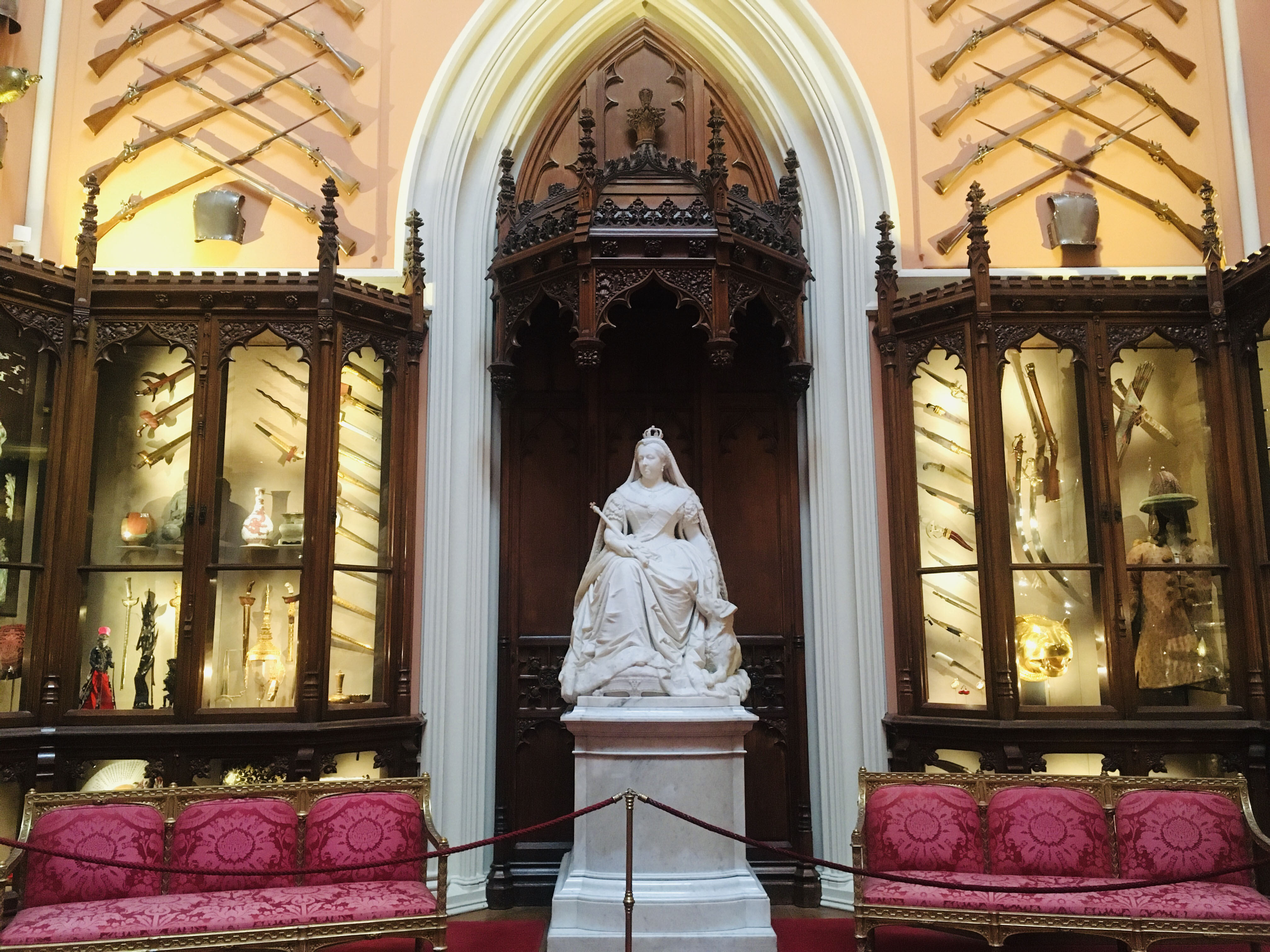
Grand Vestibule: The British Monarchy and the World
The Grand Vestibule at Windsor Castle reflects interaction between the monarchy and the wider world
INDIAN
Sabre
c.1790RCIN 67216
Sabre with a gilt-metal hilt, the grip and crossguard engraved with foliate decoration, the tiger head pommel set with diamond eyes and the scrolled knucklebow engraved with leaves. With tiger head quillons/langet. The back-edged curved steel blade with hollowed face and stylised floral reserves enclosing gilt inscriptions.
Tipu Sultan succeeded as ruler of the South Indian state of Mysore in 1782, where he built a sophisticated and modern court around his palace at Seringapatam. Tipu spent much of his reign engaged in hostilities against the British. In 1792 a peace treaty was signed but the discovery of secret communciations with Napoleon brought about a renewed British campaign against him, culminating in the sack of Seringapatam on 4 May 1799, at which time many of his personal effects were seized.
Such was Tipu’s infamy in England that collectors were eager to obtain personal relics, and many more swords survive in British country-house collections than can possibly have been found by the side of the Sultan’s body where he fell in 1799. This sword, which bears an early nineteenth-century manuscript label inscribed ‘Favourite sword of Tipoo’, has a greater claim than most. The numerous inscriptions on the blade show beyond doubt that it was a fighting sword that belonged to Tipu. The hilt is covered with the bubri tiger-stripe emblem and two of the five tiger head terminals have jewelled eyes. This refinement is not present on another sword which in other respects closely resembles this one, which was in the collection of the 2nd Baron Clive.
Inscribed in six places on the blade in gold inlays with a Persian distich and Koranic verses.
Catalogue entry adapted from George III & Queen Charlotte: Patronage, Collecting and Court Taste, London, 2004
Tipu Sultan succeeded as ruler of the South Indian state of Mysore in 1782, where he built a sophisticated and modern court around his palace at Seringapatam. Tipu spent much of his reign engaged in hostilities against the British. In 1792 a peace treaty was signed but the discovery of secret communciations with Napoleon brought about a renewed British campaign against him, culminating in the sack of Seringapatam on 4 May 1799, at which time many of his personal effects were seized.
Such was Tipu’s infamy in England that collectors were eager to obtain personal relics, and many more swords survive in British country-house collections than can possibly have been found by the side of the Sultan’s body where he fell in 1799. This sword, which bears an early nineteenth-century manuscript label inscribed ‘Favourite sword of Tipoo’, has a greater claim than most. The numerous inscriptions on the blade show beyond doubt that it was a fighting sword that belonged to Tipu. The hilt is covered with the bubri tiger-stripe emblem and two of the five tiger head terminals have jewelled eyes. This refinement is not present on another sword which in other respects closely resembles this one, which was in the collection of the 2nd Baron Clive.
Inscribed in six places on the blade in gold inlays with a Persian distich and Koranic verses.
Catalogue entry adapted from George III & Queen Charlotte: Patronage, Collecting and Court Taste, London, 2004







